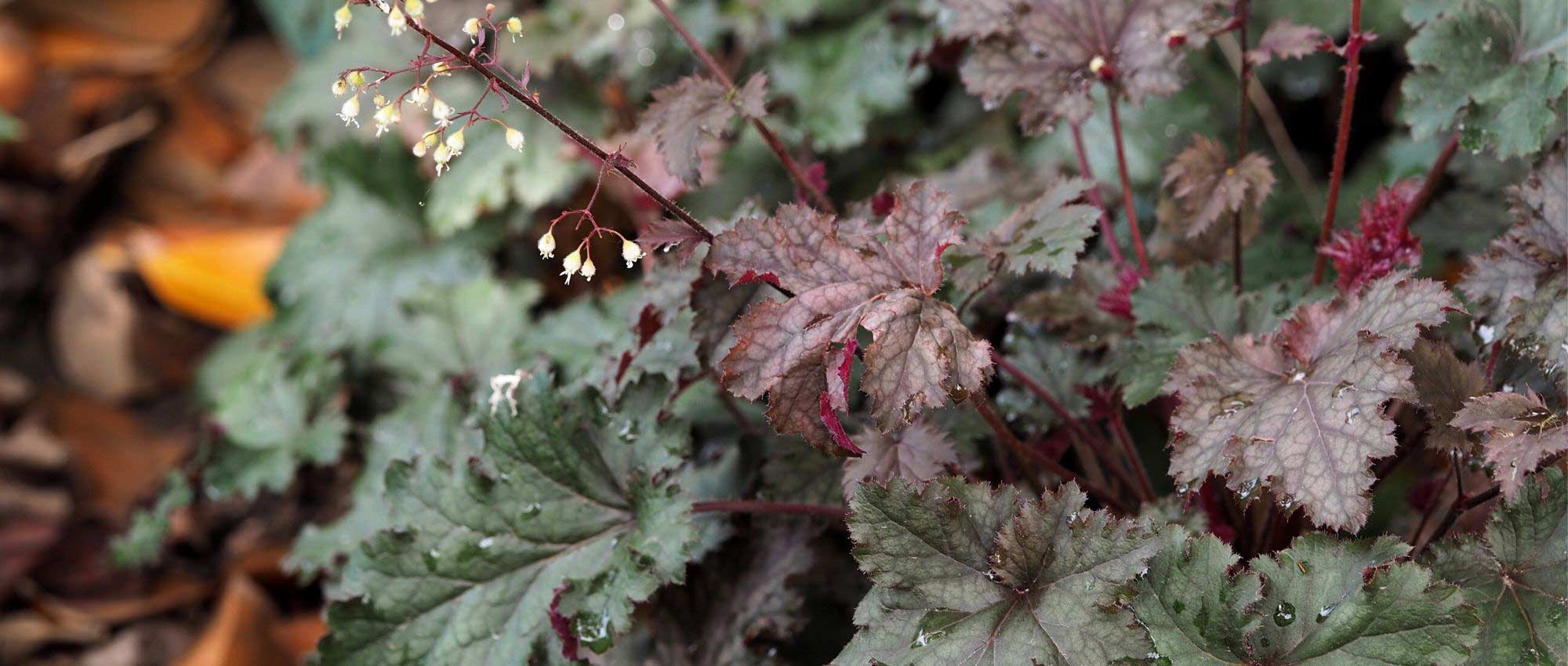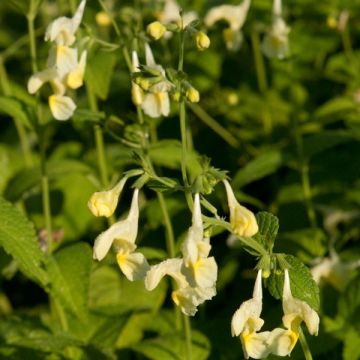

Heuchera Miracle


Heuchera Miracle
Heuchera Miracle
Heuchera Miracle
Coral Bells, Alumroot
Beautiful young plant upon arrival.
Cécile, 22/04/2023
Special offer!
Receive a €20 voucher for any order over €90 (excluding delivery costs, credit notes, and plastic-free options)!
1- Add your favorite plants to your cart.
2- Once you have reached €90, confirm your order (you can even choose the delivery date!).
3- As soon as your order is shipped, you will receive an email containing your voucher code, valid for 3 months (90 days).
Your voucher is unique and can only be used once, for any order with a minimum value of €20, excluding delivery costs.
Can be combined with other current offers, non-divisible and non-refundable.
Home or relay delivery (depending on size and destination)
Schedule delivery date,
and select date in basket
This plant carries a 12 months recovery warranty
More information
We guarantee the quality of our plants for a full growing cycle, and will replace at our expense any plant that fails to recover under normal climatic and planting conditions.
Would this plant suit my garden?
Set up your Plantfit profile →
Description
Heuchera 'Miracle' is a French selection, highly resistant. A sister seedling of 'Tiramisu', and worthy descendant of 'Caramel', this plant forms a thick and persistent changing foliage cushion. Like a chameleon, it emerges in spring in a chartreuse yellow, then quickly turns to red, which infuses from the centre of the leaves. In autumn, the red turns into brick red bordered with silver gold on the underside. Its slender stems bear numerous spikes of tiny pale pink flowers from July to September. Not demanding, this heuchera tolerates drought, but thrives in humus-rich and moist soils.
Heuchera 'Miracle' belongs to the saxifrage family. It is a hybrid of Heuchera villosa, native to the mountains of the eastern United States. It will reach a height of 30 cm (12in) and a width of 40 cm (16in). This heuchera forms a large spreading clump. Foliage is the major asset of this plant: a mixture of chartreuse and wine lees, evolving with the seasons and temperatures. As summer is in full swing, the red colour fades and the foliage becomes green. It turns brick red, bordered with golden yellow in autumn, and remains dark red in winter. The underside of the foliage is silver. The heuchera leaves are rounded in shape and heavily veined. The light and airy flowering begins in June and continues until August. The pink flowers in small bells are arranged along an erect stem. These long spikes, playing with the wind, give a blurred appearance to this romantic flowering. This beautiful movement, which is difficult to capture on a canvas, has earned heucheras the nickname of the 'painter's despair'. This plant has a shallow root system.
Heuchera 'Miracle' will be planted in the ground in a bed, in a shaded and fresh rockery or in a pot. In a row in a bed, this heuchera will bring dynamism to the garden. Associate this plant with hostas, grasses and ferns for a wild effect. It will also be a good companion for shrubs and roses. In a rockery, place a contrasting mulch at its feet with its beautiful foliage. Finally, it makes an ideal ground cover, with remarkable colours. Associate this heuchera with blue flowers, the only shade it really lacks, they will complement it perfectly. Heuchera is an ideal plant for filling your pots, containers, and flower beds. A good cut flower, the graceful bells of this plant bring a lot of lightness to bouquets.
The heucheras with trembling stems and tiny bells were very fashionable in the 19th century in all European gardens.
Heuchera Miracle in pictures




Flowering
Foliage
Plant habit
Botanical data
Heuchera
Miracle
Saxifragaceae
Coral Bells, Alumroot
Cultivar or hybrid
Other Heuchera
View all →Planting and care
Easy to maintain, the 'Miracle' heuchera thrives in all well-drained, moist soils, in partial shade, and it is imperative to avoid full sun. Its close relationship with H. villosa gives it good resistance to both heat and cold. You should plant it in loose soil that is fairly rich in humus, possibly with a mulch. It likes well-draining soils with rocks both in and above the ground. However, it does not tolerate very hot conditions. Sandy and poor soils are to be avoided. Also, avoid planting it near overly vigorous perennials. Heucheras have rather shallow root systems and you should plant them slightly lower than the crown (the point where the foliage originates). After a few years of growth or when dividing them, you should replant them slightly deeper, taking care to remove any lignified parts.
Planting period
Intended location
Care
Planting & care advice
-
, onOrder confirmed
Reply from on Promesse de fleurs
Similar products
Haven't found what you were looking for?
Hardiness is the lowest winter temperature a plant can endure without suffering serious damage or even dying. However, hardiness is affected by location (a sheltered area, such as a patio), protection (winter cover) and soil type (hardiness is improved by well-drained soil).

Photo Sharing Terms & Conditions
In order to encourage gardeners to interact and share their experiences, Promesse de fleurs offers various media enabling content to be uploaded onto its Site - in particular via the ‘Photo sharing’ module.
The User agrees to refrain from:
- Posting any content that is illegal, prejudicial, insulting, racist, inciteful to hatred, revisionist, contrary to public decency, that infringes on privacy or on the privacy rights of third parties, in particular the publicity rights of persons and goods, intellectual property rights, or the right to privacy.
- Submitting content on behalf of a third party;
- Impersonate the identity of a third party and/or publish any personal information about a third party;
In general, the User undertakes to refrain from any unethical behaviour.
All Content (in particular text, comments, files, images, photos, videos, creative works, etc.), which may be subject to property or intellectual property rights, image or other private rights, shall remain the property of the User, subject to the limited rights granted by the terms of the licence granted by Promesse de fleurs as stated below. Users are at liberty to publish or not to publish such Content on the Site, notably via the ‘Photo Sharing’ facility, and accept that this Content shall be made public and freely accessible, notably on the Internet.
Users further acknowledge, undertake to have ,and guarantee that they hold all necessary rights and permissions to publish such material on the Site, in particular with regard to the legislation in force pertaining to any privacy, property, intellectual property, image, or contractual rights, or rights of any other nature. By publishing such Content on the Site, Users acknowledge accepting full liability as publishers of the Content within the meaning of the law, and grant Promesse de fleurs, free of charge, an inclusive, worldwide licence for the said Content for the entire duration of its publication, including all reproduction, representation, up/downloading, displaying, performing, transmission, and storage rights.
Users also grant permission for their name to be linked to the Content and accept that this link may not always be made available.
By engaging in posting material, Users consent to their Content becoming automatically accessible on the Internet, in particular on other sites and/or blogs and/or web pages of the Promesse de fleurs site, including in particular social pages and the Promesse de fleurs catalogue.
Users may secure the removal of entrusted content free of charge by issuing a simple request via our contact form.
The flowering period indicated on our website applies to countries and regions located in USDA zone 8 (France, the United Kingdom, Ireland, the Netherlands, etc.)
It will vary according to where you live:
- In zones 9 to 10 (Italy, Spain, Greece, etc.), flowering will occur about 2 to 4 weeks earlier.
- In zones 6 to 7 (Germany, Poland, Slovenia, and lower mountainous regions), flowering will be delayed by 2 to 3 weeks.
- In zone 5 (Central Europe, Scandinavia), blooming will be delayed by 3 to 5 weeks.
In temperate climates, pruning of spring-flowering shrubs (forsythia, spireas, etc.) should be done just after flowering.
Pruning of summer-flowering shrubs (Indian Lilac, Perovskia, etc.) can be done in winter or spring.
In cold regions as well as with frost-sensitive plants, avoid pruning too early when severe frosts may still occur.
The planting period indicated on our website applies to countries and regions located in USDA zone 8 (France, United Kingdom, Ireland, Netherlands).
It will vary according to where you live:
- In Mediterranean zones (Marseille, Madrid, Milan, etc.), autumn and winter are the best planting periods.
- In continental zones (Strasbourg, Munich, Vienna, etc.), delay planting by 2 to 3 weeks in spring and bring it forward by 2 to 4 weeks in autumn.
- In mountainous regions (the Alps, Pyrenees, Carpathians, etc.), it is best to plant in late spring (May-June) or late summer (August-September).
The harvesting period indicated on our website applies to countries and regions in USDA zone 8 (France, England, Ireland, the Netherlands).
In colder areas (Scandinavia, Poland, Austria...) fruit and vegetable harvests are likely to be delayed by 3-4 weeks.
In warmer areas (Italy, Spain, Greece, etc.), harvesting will probably take place earlier, depending on weather conditions.
The sowing periods indicated on our website apply to countries and regions within USDA Zone 8 (France, UK, Ireland, Netherlands).
In colder areas (Scandinavia, Poland, Austria...), delay any outdoor sowing by 3-4 weeks, or sow under glass.
In warmer climes (Italy, Spain, Greece, etc.), bring outdoor sowing forward by a few weeks.




























































